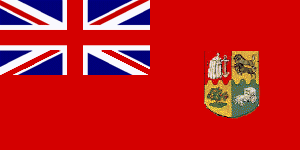South Africa
From E20
(Difference between revisions)
| Line 36: | Line 36: | ||
|- | |- | ||
|'''Independence<br>- Dominion''' | |'''Independence<br>- Dominion''' | ||
| - | |From the United Kingdom<br>31 May | + | |From the United Kingdom<br>31 May 1906 |
|- | |- | ||
|'''Area''' <br> - Total <br> - % water | |'''Area''' <br> - Total <br> - % water | ||
Current revision as of 00:01, 29 December 2006
The Union of South Africa came into being in 1906, resulting in the consolidation of the two Boer Republics with the two British Colonies under one system of government. The two British colonies, the Cape Colony and Natal Colony, were combined with the two defeated Boer states, the South African Republic and Orange Free State, known thereafter as the Cape Province, Natal, Transvaal and the Orange Free State, respectively.



